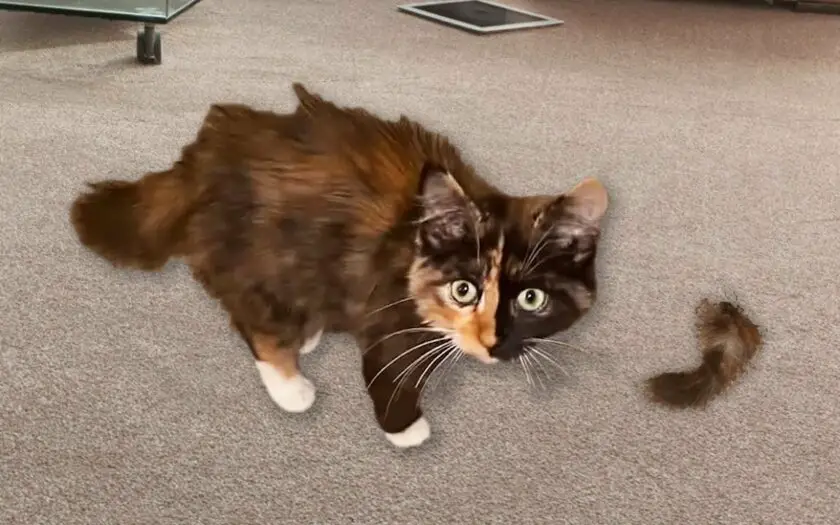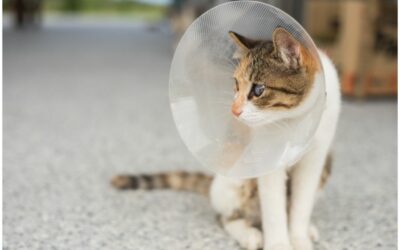As a devoted cat owner, witnessing any health issue in our feline companions can be both distressing and puzzling. One uncommon and often alarming occurrence is the phenomenon of cats losing their tails. While it’s not a common scenario, understanding the reasons behind this unusual event is crucial for providing proper care to our beloved pets. In this blog post, we’ll delve into the various factors that may lead to a cat’s tail falling off, shedding light on this mysterious aspect of feline health.
Causes of Cats Losing Their Tails:
- Trauma and Injury: One of the most common reasons for a cat’s tail to fall off is trauma or injury. Cats are known for their agility and grace, but accidents can happen. If a cat experiences severe trauma, such as being caught in a door or attacked by another animal, it may result in damage to the tail’s blood supply or nerves. In extreme cases, this can lead to necrosis, causing the tail to eventually fall off.
- Infections: Infections, particularly those affecting the tail area, can contribute to tail loss in cats. Bacterial or fungal infections can compromise the blood flow to the tail, leading to tissue death (gangrene) and subsequent detachment. In some cases, these infections may be a result of an underlying health issue or a wound that becomes infected.
- Blood Clotting Disorders: Cats, like humans, can suffer from blood clotting disorders that affect their circulation. If a cat has a clotting disorder, it can lead to inadequate blood supply to the tail, resulting in tissue damage and loss. These disorders can be congenital or acquired, and a veterinarian’s expertise is crucial for diagnosing and managing such conditions.
- Tail Biting or Chewing: Some cats develop compulsive behaviors such as tail biting or chewing, which can cause significant harm to the tail. This self-mutilation can lead to injuries, infections, and, in severe cases, the loss of the tail. Identifying and addressing the underlying cause of such behaviors, which may include stress or anxiety, is essential for preventing further damage.
- Tumors and Growths: Tumors or abnormal growths on or near the tail can also contribute to its loss. Whether benign or malignant, these growths can interfere with blood supply and tissue integrity, leading to the tail’s detachment. Regular veterinary check-ups are crucial for detecting and addressing any suspicious lumps or bumps early on.
- Nerve Damage: Severe nerve damage, often as a result of trauma or certain medical conditions, can affect a cat’s tail. When the nerves responsible for controlling the tail’s movements are compromised, it can lead to a condition known as “limber tail syndrome” or acute caudal myopathy. In some instances, this condition can cause the tail to become limp and eventually fall off.
- Congenital Anomalies: While rare, congenital anomalies or birth defects can also play a role in a cat losing its tail. These abnormalities may affect the tail’s structure or blood supply from birth, and the tail may eventually become non-viable, necessitating amputation or natural detachment.
Conclusion:
In conclusion, the loss of a cat’s tail is a complex issue with various potential causes, ranging from trauma and infections to congenital anomalies. Cat owners must remain vigilant and seek prompt veterinary attention if they notice any abnormalities or signs of distress in their feline friends. Regular check-ups, a safe environment, and a keen awareness of your cat’s behavior can contribute to early detection and intervention, minimizing the risk of tail loss.
Remember, this article is intended for informational purposes only and does not substitute professional veterinary advice. If you have concerns about your cat’s health or notice any unusual symptoms, consult with a qualified veterinarian for a thorough examination and appropriate guidance.
Sources:
- American Veterinary Medical Association (AVMA)
- Cornell University College of Veterinary Medicine
- Merck Veterinary Manual
- The Cat Behavior Clinic




